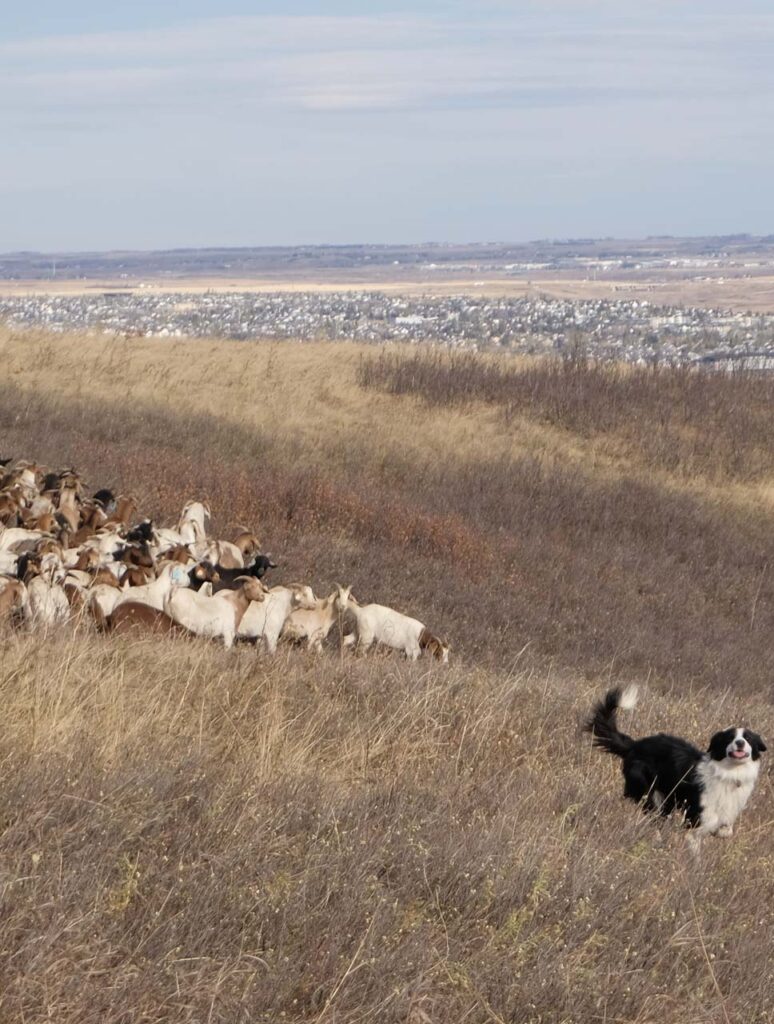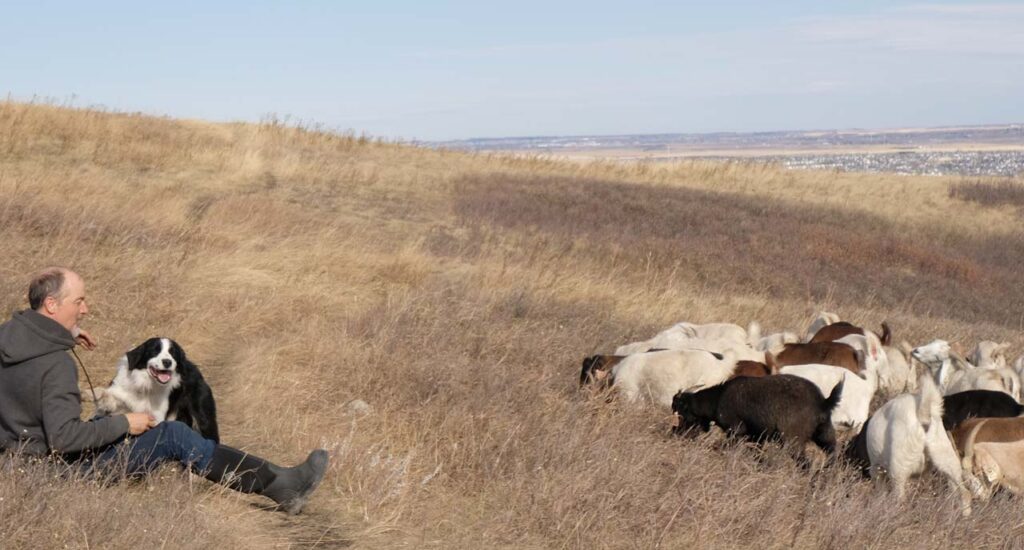Early respite for man and beast alike as heavy snow halts Nose Hill grazing
Published in The Press on Nov. 22, 2022.

Calgary’s Nose Hill Park is still and foreboding as the snow falls and winter once again engulfs the city. It’s hard to reconcile that mere days ago, the northeastern face of the park saw an entirely different flurry of activity: goats methodically chomping through the brush as part of the city’s targeted grazing project.
According to goatherd Trent Cahoon, there will be much to look forward to next spring. “You’ll be able to see where the goats have spent time, like on the thistle patches and the buckbrush, because it will be noticeably greener,” he said.
Since 2016, targeted grazing has been employed to safely manage invasive plant species in some of the city’s most important parklands, including Confluence Park and parts of Fish Creek Provincial Park.
Beginning Oct. 14, a herd of 260 goats from the Magrath, Alta.-based Creekside Goat Company was deployed on Nose Hill to graze.
“Goat grazing is probably the closest thing you can get to the native bison and the buffalo that were here before because buffalo are always on the move, as are goats. Sheep and cows are more stationary,” said Cahoon.
The herd does not have free rein in the parkland, however. Limited to 40 hectares in the park’s Rubbing Stone Hill zone, it is up to Cahoon and his trusted partner, Chance, to keep them focused on the job.


Chance, a former sheepdog, is in his element as a goat-herding canine.
“Chance just wants to run after goats all day. When he’s not running after goats, he just wants love all day, so I put in the time,” said Cahoon. “I have a really good bond with Chance.”
Between catering to Chance’s needs and chasing down wayward goats, it seems like Cahoon has his work cut out for him. But the veteran goatherd is far from overwhelmed.
“This job suits me. I kind of fit the profile,” he said.
For Cahoon, goat herding is a step up from his former job as a conference interpreter for mining companies in Chile.
“It was just too much mental effort, mental exhaustion. Now my mind is free,” he said.
The grazing program was initially set to run for 30 days. Unfortunately, heavy snow in recent days has forced the city to end the initiative two weeks early.
Back home at the Creekside farm, the goats subsist on bales of alfalfa hay. Creekside keeps its herd outdoors all year round. This helps avoid foot rot, a fungus that thrives on warmth and grows on goat and sheep hooves.
The predominantly female herd is now also primed for breeding during the winter, thanks to the good work of the herd’s sole gomer bull, whose primary job on Nose Hill was to warm up the nannies for the bucks back on the farm. Cahoon estimates approximately 400 kids by April.

For Cahoon, Nose Hill is his last job for the season. He will then fly to Italy with his daughter, who is set to study art therapy for the next three years.
“I’m along for the ride, and I hope to find a job. If I find a job, I’ll stay,” he said.
Chance, meanwhile, is back at the Creekside farm, where he has “lots of friends.”
Whether the goats will be back on Nose Hill next year remains to be seen.
“This is a pilot program for the city. If they like what they see, they’ll bring us back. We should have at least double this amount of goats, maybe more, and more time and more area,” said Cahoon.